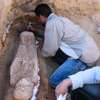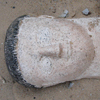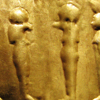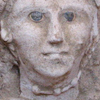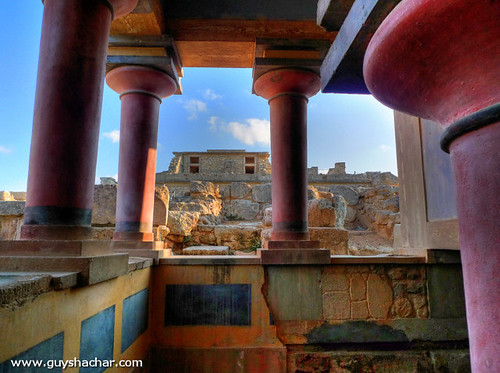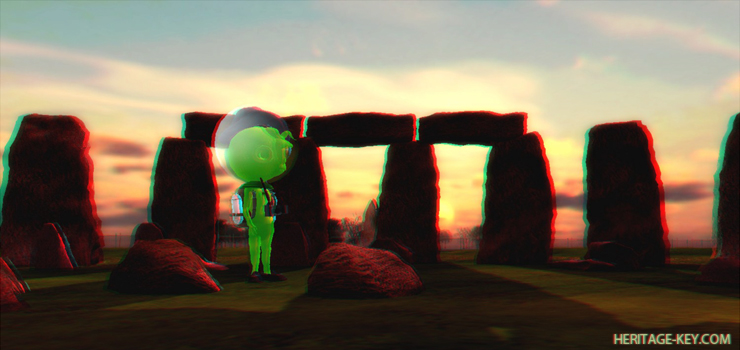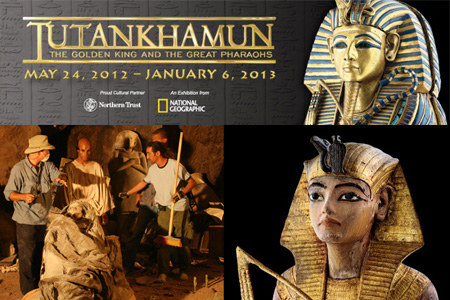 Thirty years after the wonders of King Tut first toured the world, an even bigger exhibition Tutankhamun: The Golden King and the Great Pharaohs will make its appearance at the Pacific Science Center starting May 24th, 2012.
Thirty years after the wonders of King Tut first toured the world, an even bigger exhibition Tutankhamun: The Golden King and the Great Pharaohs will make its appearance at the Pacific Science Center starting May 24th, 2012.
With an almost entirely different selection of treasures and more than twice the number of artefacts than were displayed in the 1978 exhibition, Tutankhamun: The Golden King and the Great Pharaohs features more than 100 remarkable objects from the tomb of King Tut and ancient sites representing some of the most important rulers throughout 2,000 years of ancient Egyptian history.
This is really a big deal,commented Washington Governor Chris Gregoire. This exhibition will give a new generation of individuals the chance to see these irreplaceable artifacts, not online and not on their phones, but in person at Pacific Science Center.
What’s there to see at ‘Tutankhamun: The Golden King and the Great Pharaohs’?
The 1978 exhibition at the Seattle Art Museum, which even then already drew 1.3 million visitors, featured King Tut’s Golden Death Mask (great photos by Sandro here) but, alas, today it is deemed to precious to travel and is safely held at the Cairo museum. Yet there will be many other extraordinary gems from KV62 (Tut’s Tomb), as well as additional artefacts and statues ofthe greatest rulers of Egypt. The star items:

Tutankhamun’s Treasures visiting Seattle
- A Colossal Statue of Tutankhamun (1 out of 2)– This colossal statue of Tutankhamun was found at the remains of the funerary temple of Ay and Horemheb. The belt is inscribed with the name Horemheb, written over the earlier names of Ay and Tutankhamun.
- Tutankhamun’s Golden Sandals– Thesesandals have engraved decorations that replicate woven reeds. Created specifically for the afterlife, they still covered the feet of Tutankhamun when Howard Carter unwrapped the mummy. (In my opinion, not his best pair. Far more original are these leather sandals with Ancient Egypt’s enemies on the sole; that way Tut would trample his foes with every step.)
- King Tut’s Canopic Coffinette and a Canopic Stopper– The canopic chest’s four hollowed out sections (holding Tut’s internal organs) were each covered with a lid in the form of Tutankhamun’s head or at least a Pharaohs head, it is debated if Tut did not usurp the container from a predecessor. Each of the sections also contained a miniature coffin. The one on display at ‘Tutankhamun: The Golden King and the Great Pharaohs’ originally held King Tut’s stomach. Here also, traces around the name of Tutankhamun suggest that the king appropriated the golden coffinettes.
- A Shabti Servant for the Boy King – This servant statuette is one of the largest discovered in KV62, and the only such figure found in the antechamber. Inscriptions record the shabti spell from the Book of the Dead, ensuring the king would do no forced labour in the afterlife.

Great Pharaohs and Ancient Egyptians
- Colossal Statue of Amenhotep IV – Amenhotep IV is better known as the rebel pharaoh Akhenaten and could be, if the mummy found in KV55 is Akhenaten, the father of King Tut. This colossal sandstone image is one of many depictions of the pharaohfound at Karnak, enhancing the colonnade of the king’s temple to Aten. The double crown, atop the nemes-headdress, alludes to the living king as representative of the sun god.
- The Funerary Mask of Psusennes I– This golden mask lay over the head, chest and part of the shoulders of the mummy of Psusennes, as a layer of protection. (The Egyptians believed in resurrection rather than reincarnation, so best arrive in the afterlife as complete as possible!) The use of gold considered the flesh of gods on royal death masks reaffirmed the King’s divinity in the afterlife.
- The collar of Princess Neferuptah – This collar was discovered on the body of Neferuptah, daughter to Amenhotep III. This wide collar is made up of 6 rows of alternating feldspar and carnelian beads. At both ends of the collar’s front are two falcon head fastens. Though rich in detail and aesthetically complex, the collar was also prized for its protective value.
- Head of Amenhotep III wearing the Blue Crown– From the Karnak Temple Cachette, this rather unusual statue was modelled in unbaked clay with the features of Pharaoh Amenhotep III, Tut’s granddad – in particular those seen near the end of his reign.
- Statue of Inty-Shedu – Inty-Shedu’s tomb at the cemetery of the pyramid builders contained several statues of himself. This one, the largest, records both a religious title, ‘overseer of the boat of Neith’, and a secular one, ‘king’s acquaintance.’
At the Seattle exhibition you should also look out for the inner coffin of Meritamun, the pectoral of Shoshenq II, Tutankhamun’s gilded leopard head (originally worn on a robe that represents leopard skin) and the sarcophagus of Thutmosis’ cat.
No royal mummies, but to make up for that ‘Tutankhamun: The Golden King and the Great Pharaohs’ will be supplemented by the screening of the IMAX film ‘Mummies: Secrets of the Pharaohs’ narrated by Christopher Lee (who starred in the original 1959 film The Mummy, part ofMalcolm’s Top 10) at the Pacific Science Center‘s IMAXtheatres.
Mummies: Secrets of the Pharaohs IMAX film
Why are people endlessly fascinated with mummies? The worldwide curiosity about mummification is an age-old phenomenon as enduring as mummies themselves. During Egypts history literally millions of mummies were made. Mummies: Secrets of the Pharaohs takes you on a modern-day forensic adventure, and unravels some of the mysteries enshrouding the ancient royal mummies, how they were embalmed and where they were hidden.
‘Mummies’ recreates the incredible events surrounding the late 19th century discovery of a cache of 40 royal mummies, including 12 Kings of Egypt, in a single tomb at Thebes, now known as TT320. Among them were three of the greatest pharaohs that ever lived: the legendary Ramesses the Great – Ramesses IIis considered to be the pharaoh of the Exodus and perhaps the only face the world can see from the Bible – his father Seti I, and his son. Prior to that, not even one pharaoh had ever been found. Believed by many to be the ultimate archaeological find, it was uncovered a full four decades before Howard Carter found the intact tomb of the boy king Tutankhamun.
Interwoven throughout the films historic narrative is a modern-day forensic story, a scientific journey to extract clues about our past that could have an impact on our future. More than a decade ago, Bob “Mr Mummy” Brier and a colleague used the clues he had assembled to perform the first human mummification in the Egyptian style since the time of the pharaohs: It probably took ten years to create our modern mummy.
Lots of research, including inscriptions on temple walls and reading ancient sources was needed. Dr. Brier says the most difficult part, however, was putting the right team together: We had to have ceramics people make the vases for us and we had to find ancient surgical tools. We were very fortunate to have a great number of people working with us – you look at it on screen and it appears like its just Ron Wade and I, but we had hundreds of people helping us behind the scenes. The truth is I wouldnt do it again. And dont try this at home, kids- were all professionals. We may not get paid, but were all professionals!
In the film Brier and DNA specialist Angelique Corthals check in on the progress of the modern mummy and conduct key genetic testing. Though DNA taken from soft tissues of mummies is too damaged from the agents used during mummification, DNA in the bones is well preserved and much more reliable for analysis (Here you can see how they extracted DNAfrom King Tut’s mummy). Perhaps the DNA held in mummies like Ramesses’ will be able to help to cure people today. By comparing the pathogenicity of the different strains of parasites and bacteria or viruses to the response of the host’s immune system over time, scientists can infer their weakness or a better immune response, thereby possibly leading to the production of a vaccine.
King Tut on Tour in 2010
If you don’t want to wait until 2012, or you are in doubt if we’ll even make it that far or don’t live near to Seattle anyway, here are some other King Tut exhibitions to visit:
King Tut’s Treasures, a Virtual Exhibition here on Heritage Key
At King Tut Virtual, you can zoom in on King Tut’s greatest treasures and explore the Valley of the Kings at the time when Howard Carter made the world’s greatest archaeological discovery: the Tomb of Tutankhamun. Experience life by the Nile in Ancient Egypt, gather clues as to how the Egyptians envisioned the afterlife, and dig up your own artefacts.
Marvel at King Tut’s Golden Death Mask in the Cosmic Gallery or explore our newest area: Amarna. Take a trip along the (virtual) Nile and get up close and personal with Queen Nefertiti’s Bust, avoid the lurking (but incredibly cute, in an ancient, massive kind of way) hippos, browse through the Amarna Letters and meet our Scribe who will teach you all about his job and daily life at Amarna. When visiting Akhenaten’s virtual city, don’t forget to play ‘Royal Match’. Pair up the correct 18th Dynasty royal couples, and win a horrifying but splendid reward.
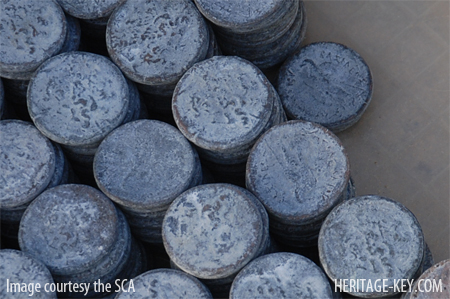 Egyptian Minister of Culture Farouk Hosni announced today the discovery of 383 coins from the Ptolemaic period near the Fayum Oasis. Prehistoric jewellery made from ostrich eggs, and a skeleton of a 42-million-year-old whale were unearthed as well.
Egyptian Minister of Culture Farouk Hosni announced today the discovery of 383 coins from the Ptolemaic period near the Fayum Oasis. Prehistoric jewellery made from ostrich eggs, and a skeleton of a 42-million-year-old whale were unearthed as well.



 Thirty years after the wonders of
Thirty years after the wonders of 












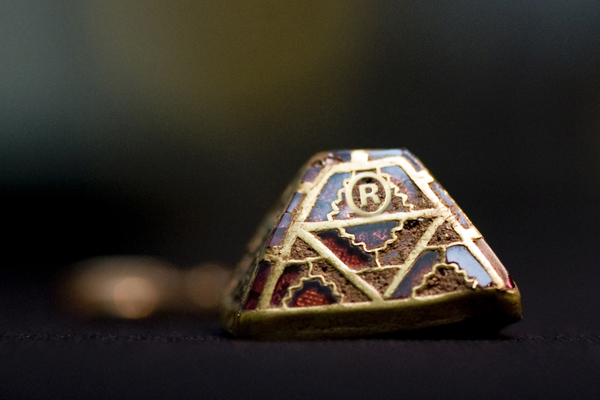
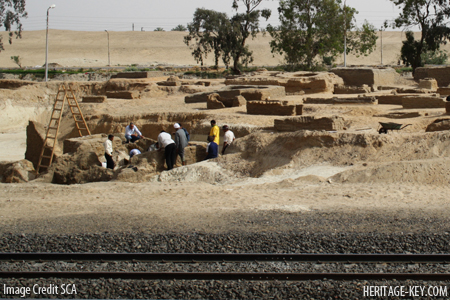 The first ever Ramesside period tomb has been found in Lower Egypt. The 3300-year-old tomb – belonging to Ken-Amun, a government official – has been discovered by an SCAmission at Tell el-Maskhuta. The excavations have also revealed 35 Roman tombs.
The first ever Ramesside period tomb has been found in Lower Egypt. The 3300-year-old tomb – belonging to Ken-Amun, a government official – has been discovered by an SCAmission at Tell el-Maskhuta. The excavations have also revealed 35 Roman tombs.

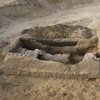

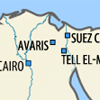
 In addition to this tomb, the excavation has found 35 tombs dating to the Roman Period, as well as a limestone stela inscribed with hieroglyphs containing the name of the Hyksos capital Avaris (near the modern city
In addition to this tomb, the excavation has found 35 tombs dating to the Roman Period, as well as a limestone stela inscribed with hieroglyphs containing the name of the Hyksos capital Avaris (near the modern city 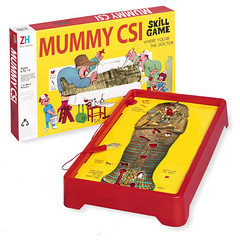
 A collection of 14 Graeco-Roman tombs, artefacts and a mummy dating to the third century BC have been discovered in a cemetery in the Ain El-Zawya area of Bawiti, a town in the Bahariya Oasis, Egypt. The find is early evidence of a large Graeco-Roman necropolis at the site.
A collection of 14 Graeco-Roman tombs, artefacts and a mummy dating to the third century BC have been discovered in a cemetery in the Ain El-Zawya area of Bawiti, a town in the Bahariya Oasis, Egypt. The find is early evidence of a large Graeco-Roman necropolis at the site.